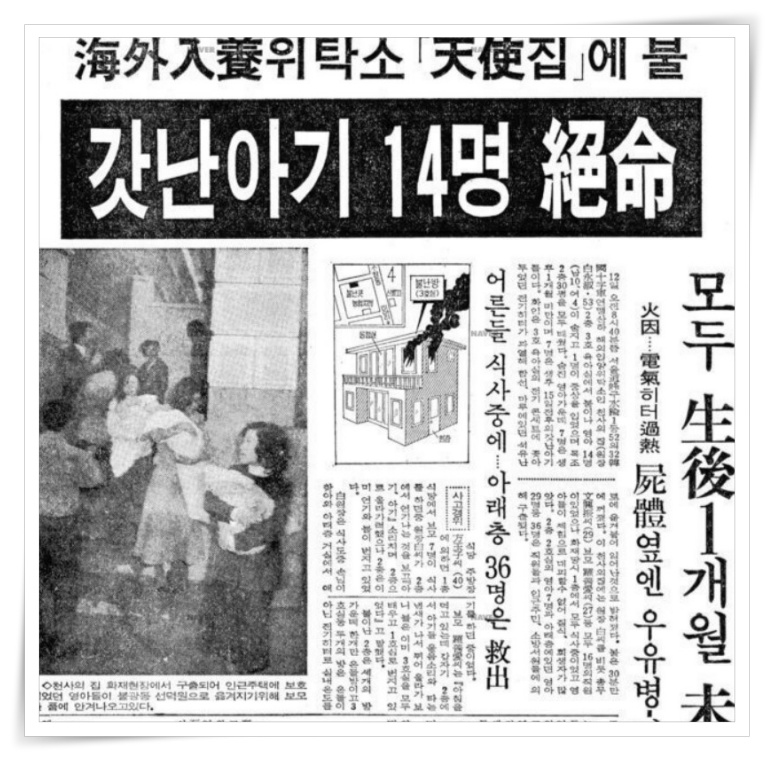- Headline: "Fire at 'Angel's Home' Overseas Adoption Shelter Claims Lives of 14 Infants"
- Source: Chosun Ilbo
- Date of Publication: March 13, 1975
- Summary:
A fire broke out around 8:40 a.m. on March 12 at Angel’s Home, an overseas adoption shelter operated by the Korea Christian Crusade (now known as the Eastern Social Welfare Society), located at 52-32, Suyu 1-dong, Dobong-gu, Seoul. The fire began in Nursery Room No. 3 on the second floor, resulting in the deaths of 14 infants (10 boys and 4 girls), with one sustaining severe injuries. The wooden two-story building was completely destroyed. Among the deceased were seven infants less than a month old and seven around 15 days old. At the time of the incident, 16 staff members, including Director Yeong-Sook Baek (53), were on the ground floor having breakfast. Seven infants on the second floor and 29 infants on the ground floor were rescued, but the infants in Rooms No. 1 and 3 were found deceased at the scene, lying neatly in rows. Charred toys were scattered around the bodies.
Angel’s Home shelters infants born to unwed mothers or families in financial difficulty, caring for them until the age of seven and facilitating their adoption by foreign families. Currently, the shelter houses 51 children aged 1 to 5. The Korea Christian Crusade, part of the World Christian Crusade Association, operates 24 shelters for infants and pre-schoolers nationwide, having arranged 27 adoptions to the U.S. in 1973 and 184 in 1974. When it was revealed that all 14 infants who perished in the fire were born to unwed mothers, both Chosun Ilbo (March 13, 1975) and Dong-A Ilbo (March 15, 1975) unanimously emphasized the urgency of preventing unwed motherhood. The irony of framing the solution to the fire tragedy as the prevention of unwed motherhood highlights the extent to which unwed mothers were stigmatized during this period.
CLICK the article below to view the original scanned article as it appeared in print, complete with text and images, on the Naver News Library, which archives Korean newspapers from the 1920s to the 1990s. For easier reading, click “텍스트 보기” (View text) in the top right corner to open a text-only window.
Note: Articles are in Korean, and English translations are not provided in the library.  The English summary and translation of this article is provided by UMI4AA.
|
